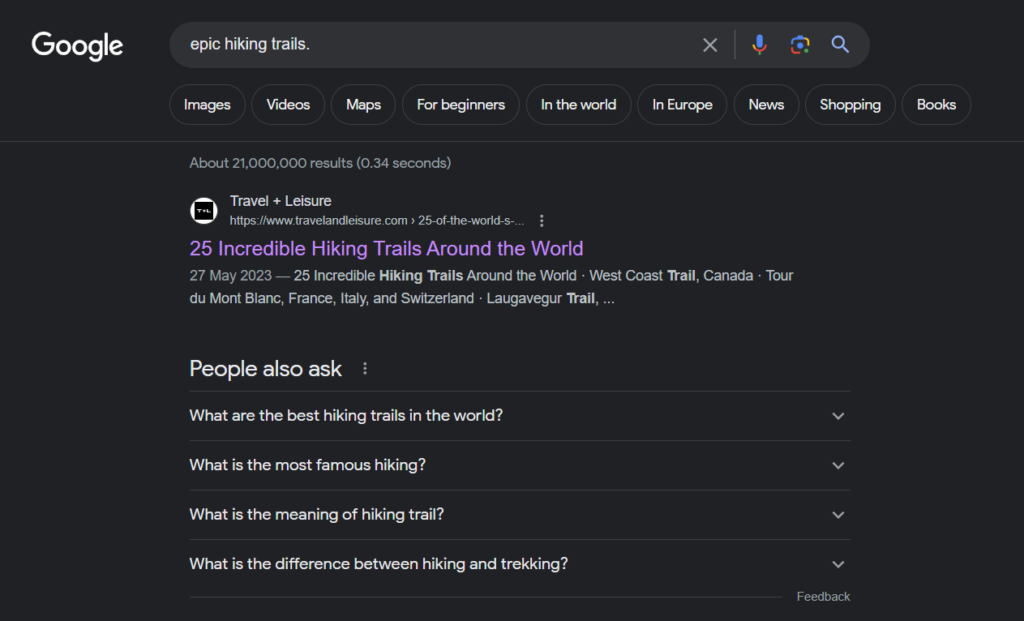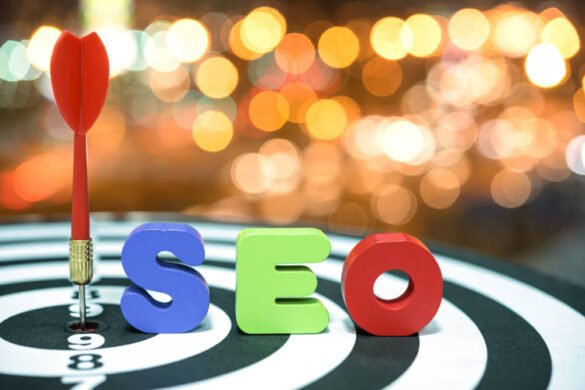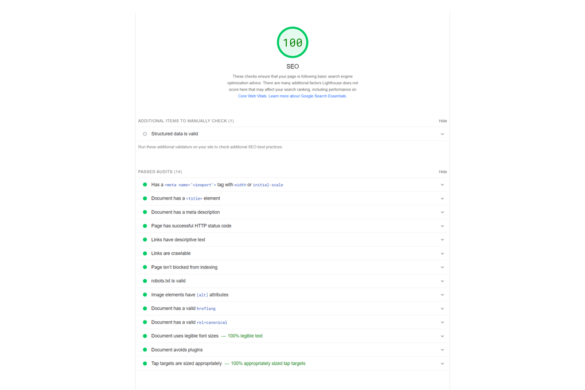Table of Contents
A Search Engine Optimization (SEO) landing page serves as the magnetic force attracting organic search traffic relevant to your business, resulting in a chain reaction of conversions.
Consider SEO landing pages as premium fish bait. In the vast ocean of potential prey (equivalent to web pages in your scenario), your bait should distinguish itself, capturing the attention of your audience actively searching for sustenance (akin to content in your context).
Picture SEO landing pages as the premium bait in a vast sea of prey, analogous to web pages in your scenario. Your bait must not only stand out but also exude allure to your audience actively hunting for content – their proverbial sustenance.
These pages act as trailblazers, guiding fresh prospects to your digital doorstep through organic search endeavors. Their primary mission is to propel conversions and elevate sales. If you aim to enhance revenue through SEO-friendly landing pages, delve deeper into this blog post. It will unravel the intricacies of:
- What is an SEO landing page?
- 5 Best practices for preparing SEO landing pages
What is an SEO landing page?
Creating an SEO landing page involves planning a strategy to attract natural search traffic linked to keywords related to a company’s business and sector. The ultimate goal? Coordinating conversions with relevant content that is carefully crafted to respond to particular search terms and intents.
SEO landing pages navigate the delicate dance of either converting visitors on-page or, with finesse, kindling their curiosity to propel them toward other links where conversions beckon. Typically integrated into an inbound marketing endeavor, these pages set their sights on amplifying site traffic aligned with your business. Notably, SEO landing pages may or may not find a spot in your website’s navigation.
Simple but sophisticated, clear as day, and crowned with an attention-grabbing call-to-action (CTA), SEO landing pages have to provide a compelling user experience that concludes with conversion. Think about a landing page that is all about carpet cleaning.

This website asserts its dominance when searching for “epic hiking trails.” Its contents unfold as a thorough guide to hiking breathtaking trails worldwide. Towards the end of the story, it invites readers to look through the offered travel packages and start thinking about their next journey.
5 Best practices for preparing SEO landing pages
Reaching the full potential of your SEO landing pages starts a domino effect that draws in your target audience as these online billboards move up the search engine results page (SERP) ranks. The secret is to use SEO tactics that not only draw targeted traffic to these landing pages but also act as a kind of ballet, turning casual site visitors into devoted customers and creating a crescendo that leads to higher sales.
Here are five holy scrolls containing the knowledge of SEO landing page best practices for those who long to decipher the mystery of ideal landing page alchemy:
- Make use of keyword research to guide the content of your SEO landing pages
- Assist search engines in figuring out your content structure
- Make sure your SEO landing pages are responsive.
- Pay attention to how quickly pages load.
- Analyze the performance of your SEO landing pages with analytics.
1. Make use of keyword research to guide the content of your SEO landing pages
Prior to creating your SEO landing pages, you must conduct keyword research, which is an essential first step. Find long-tail keywords that are relevant to your company and goods to start the process.
Content creation then depended on these terms, making sure that the content was carefully aligned with the search intent that supported them. The sole goal of Google’s Helpful Content Update is to provide searchers with information that is not only relevant but also priceless. Therefore, the more support your landing page offers, the better chance it has of earning an excellent ranking. Interestingly, this algorithmic change highlights the increasing dominance of content created for human consumption as opposed to content created exclusively for search engine algorithms.
When including the identified keywords in your written content, use caution and avoid overuse. Search engines are smart enough to identify instances of keyword stuffing, which is a tactic that does not advance your goal of ranking highly.
Rather, find supporting keywords that fit naturally into your writing. These secondary keywords should strengthen the foundation your primary long-tail keyword laid by adding contextual depth to your SEO landing page.
2. Assist search engines in figuring out your content structure
Your potential customers are the main audience for SEO landing page optimization. On the other hand, it is equally important to make sure that web crawlers can easily read these pages so they can examine and understand the underlying structure. This makes it easier for the bots to understand the core of your landing pages and index them correctly.
Please remember to include the following on your landing pages:
- Title Tag: Create an easily understood title tag for your landing page that prominently features your main keyword.
- Meta Description: This snippet might be showcased in search engine result pages (SERPs), influencing the decision of a searcher to click on your landing page. It also serves as a search ranking factor, making it crucial to include your primary keyword.
- Headings: To improve readability, include subheadings in your content to divide the text into manageable chunks. These headings also provide search engines with additional information about your landing page.
- Internal Links: Include links within your SEO landing page to give search engines more information about the content. They help spread link equity among all of your pages as well. Make sure that relevant internal link anchor text matches the content.
- Alt Tags: Add insightful alt tags to your photos so that search engines can “interpret” them when they appear on your SEO landing pages.
- Keyword-Optimized URL: Make use of your SEO landing page’s URL to give searchers and search engines an idea of the theme of the page.
- Get High-Quality Backlinks: Backlinks to your website that come from other respectable websites attest to your authority as a company. Getting backlinks from reliable sites improves the search engine ranking of your page.
3. Make sure your SEO landing pages are responsive
Given that mobile devices account for over 58% of all web traffic these days, mobile-friendly SEO landing pages should be given top priority. Make it easier for your audience to convert by making sure that your Call to Action (CTA) is positioned correctly on all of their devices, enabling visitors to take the actions you want them to.
Moreover, Google’s implementation of mobile-first indexing increases the probability that mobile-friendly pages will be ranked favorably on Search Engine Results Pages (SERPs). Do you have doubts about whether your SEO landing pages are mobile-friendly? Use Google’s Mobile-Friendly Test tool to assess them.
4. Pay attention to how quickly pages load
Page speed is a crucial component that affects SEO rankings; Google recognizes this metric. Consequently, your SEO landing page must boast an impeccably swift load time. Remarkable figures indicate that 83% of users expect websites to load in less than three seconds.
Learn how to increase the speed at which your page loads by implementing the following tactics:
- Optimize Your Images: Reduce the size of the image files on your page without sacrificing quality. This practical method guarantees the preservation of visual quality while increasing overall effectiveness.
- Reducing HTTP Requests: Each element that your page downloads, including scripts, content, and other site components, results in an HTTP request that lengthens the loading time. Reduce the number of components on your page; too many will make it take longer to load.
- Limiting Redirects: Redirects are useful tools for directing users away from broken links. Redirects in excess, however, can negatively affect the speed of your page. Make an effort to strike a wise balance by minimizing redirects.
Analyze the performance of your SEO landing pages with analytics.
It is crucial to make sure that your SEO landing pages attract clicks and occupy a prominent position on Search Engine Results Pages (SERPs). Use Google Search Console to find out which pages are showing up for the keywords you have chosen.
Concurrently, Google Analytics offers information on the number of distinct visitors to your website. Google Analytics is the tool to use if you’re also interested in learning about a landing page’s conversion metrics.
Make use of SteveAyo to enhance your SEO landing pages.
Increase your potential by utilizing SEO landing pages that generate leads and encourage conversions, which will increase your sales. The skill of copywriters, designers, and developers must work together to optimize landing pages for conversion.
If there is anything that your team needs help with when creating SEO landing pages, SteveAyo is the go-to partner. We at Ensemble Team Experts are excited to work with you to create SEO landing pages that will boost your revenue.
Are you eager to get things going? Get in touch with us via our website or give us a call at (+255) 783-957-836 to speak with a strategist about our excellent SEO services!







Add your first comment to this post